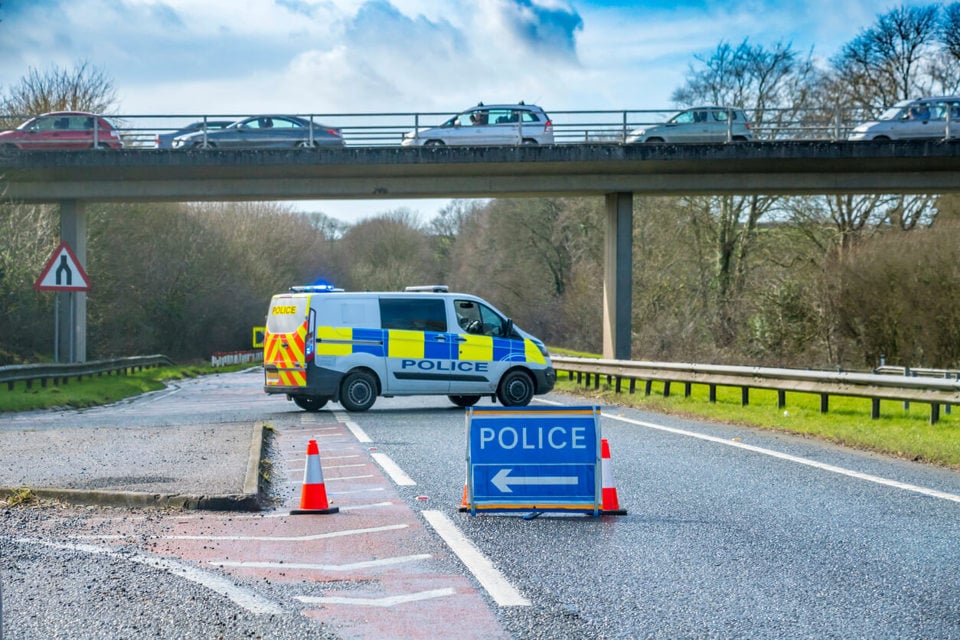There were an estimated 260 deaths on Britain’s roads in 2021 where a motorist was over the drink drive limit – an 18% year-on-year increase and the highest since 2009 – new figures from the Department for Transport (DfT) suggest.
Drunk drivers accounted for 17% of all road deaths, up two percentage points from 15% reported in the previous year.
The DfT drink-drive data also shows that 6,740 people were injured in drink drive accidents, up 4%.
RAC road safety spokesman Simon Williams said: “These figures are extremely worrying and demonstrate that the battle against drink-driving is far from over.
“This should be a wake-up call to both the Government and police forces about the need for effective enforcement, including increased roadside breathalysing.”
Edmund King, AA president, labelled the 260 deaths a “tragedy” which were down to “irresponsible” drivers. “This is against a backdrop of reduced travel due to Covid lockdowns and, even more tragically, tens of thousands dying from Covid,” he said.
“There is no excuse for drink driving. If you are going to drive, don’t drink. If you are going to drink, don’t drive.”
Data published last year showed that the number of drivers breathalysed by Police in England and Wales fell by 7% in 2021, reaching a record low.
The figures revealed that 224,162 motorists were tested at the roadside during 2021, continuing the downward trend since the peak of 709,512 breath tests in 2009. A decline of 68%.
Hunter Abbott, MD of personal breathalyser firm AlcoSense, said: “It’s very concerning indeed to see the number of fatalities caused by a drunk driver increase by nearly a fifth.
“Although we spent much of 2020 in lockdown, resulting in less traffic on the roads, restrictions were also in place for the first half of 2021 so again there were fewer vehicle movements than usual.”
He continued: “What these figures don’t tell you, of course, is how many more casualties were caused by ‘lethal but legal’ drivers – those who were above the point of intoxication where effects on cognitive function occur, but below the official drink drive limit.”
Analysis by AlcoSense of the new data shows that London and the South-East accounted for 28% of all drink drive casualties in Great Britain, with Scotland (where the drink drive limit is lower) recording the fewest (3%).
“More drivers need to be tested by Police after an accident,” added Abbott, who is also a member of the Parliamentary Advisory Council for Transport Safety (PACTS). “Every year 17% of motorists fail the test or refuse to provide a sample.”
In May, DfT figures showed that the overall number of deaths on UK roads had risen from 1,558 in 2021 to 1,695 in 2022 – an increase of 8.7%.
Nextbase head of road safety, Bryn Brooker, said: "This spike in road deaths where one of the drivers was over the alcohol limit is seriously concerning. Every death on the road is one too many.”
Antony Kildare, CEO of road safety charity IAM RoadSmart, says that the latest statistics show far too many motorists in the UK still feel its’s acceptable to drive after drinking alcohol.
"We urge the Government to put resources into tackling the real problem areas when it comes to drink-driving – young drivers, those with challenging behaviours around alcohol, and those who simply don’t believe they will ever get caught," he added.
"The best way to catch those who ignore the limit is through intelligence-led high profile policing so investment in roads policing must be protected. The reality of being caught must be matched in education campaign messaging.
“It must not be forgotten that drivers who take a drink-drive rehabilitation course are less likely to reoffend.
"Currently, a convicted drink-driver has to choose to take a course when they appear in court. At IAM RoadSmart we believe a more effective option would be to make the course compulsory and force drivers to opt out only if they choose to do so.”
For the complete drink-drive DfT data, click here.























Login to comment
Comments
No comments have been made yet.